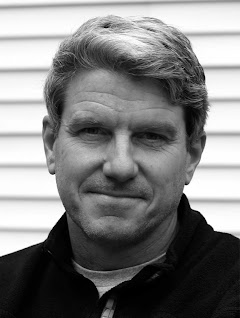Beat
I cover a full range of breaking news, features, politics and major sports assignments.
One Shot

“I really don’t have a single favourite image, but one recent one that stands out came from the “Occupy Wall Street” movement. I photographed a woman with long dreadlocks who was dragged from a group of protestors by police. The image of her hair flailing about, her body lifted off the ground and police struggling to restrain her became something of a metaphor for me for the protest movement: an angry young demonstrator clashing with the authority figures. It stood out as a solid, compelling news picture that told the story of the day in dramatic fashion and was widely published around the world. These kinds of news images are my favourites.”
Profile
My earliest memory of photography as a craft was learning to develop film and make black-and-white prints with my father in a darkroom we inherited when we moved to a new home in Cambridge, Massachusetts, where I grew up. That and my mother, who was a prolific photographer, always shooting our family of five boys.
Learning to photograph really never ends as we constantly change and improve our techniques, and as the technology of image-making changes. Making compelling pictures of events as they unfold, or of situations others may never experience, is a learning process more than an end.
My first job as the only photographer for a group of small weekly newspapers near Boston in the late 1980s taught me a lot. Learning from your peers, how to improve and what makes a successful news photograph is one of the great parts of being a photojournalist. I take great new inspiration from young photographers today.
My first really important assignment for Reuters came about in 1993. On a quiet weekend in February, when most of the regular Reuters photographers were off, the new kid, (me), was assigned to accompany Reuters veteran New York court reporter Jean King, who had been granted exclusive access to interview a Muslim cleric in a ramshackle second story apartment serving as a mosque in Jersey City. It turned out that the man we were to meet and photograph was non other than Sheik Omar Abdel-Rahman, a blind Egyptian fundamentalist Islamic cleric who was later convicted in connection with the 1993 World Trade Center bombings. Little did I know that months later several of his subjects were to carry out the attack. The images, some of just a handful of Rahman that exist, became some of the most widely published of my career.
A recent project I shot and reported about HIV/AIDS among African Americans had a profound personal impact on me. As photographers we find reward mostly in making lasting and hopefully meaningful and compelling images of our world now. Yet what I found most rewarding about this small project was the people I met. Glimpsing the world they live in, identifying the immense problems they face, and learning their personal stories, happy and sad, put a human face, a name, a voice and a place on part of such a huge global pandemic.
I love assignments where I get to experience something different, learn something new or witness history being made. This can come from major events like the Olympics, breaking news or feature stories where you never know who you will meet or what will happen. The potential for adventure and exciting visuals is what keeps photojournalists hungry.
Who do I take pictures for? The only way I can answer that is - everyone. A wire service like Reuters serves such a huge and varied audience around the world that we need to always keep in mind that something boring or mundane to some may be exciting and interesting to others.
My biggest lessons have been: pay attention, respect your subjects, try to stay neutral, work hard, and remember that many would do anything to be in your shoes and see what you get to see, so treat it as a privilege. Above all... don’t be late! You can’t photograph what has already happened.
I have immense respect for those photographers who time and again put themselves at great personal risk to bring images of the most dangerous and challenging stories to the world. My Reuters colleagues Goran Tomasevic, Yannis Behrakis, Ahmad Masood, Adrees Latif, just to name a few of the many others who do what so few are able to: move us and amaze us with their pictures and make us stop, look and learn in a world now overflowing with images.
Wire service photography is always changing. I thrive on the competitive environment we operate in daily. You need to be well-rounded as a wire service photographer, able to cover news and sports and everything in between. You need to be a great editor and handle the extreme competition that comes with the job.
Behind the Scenes

